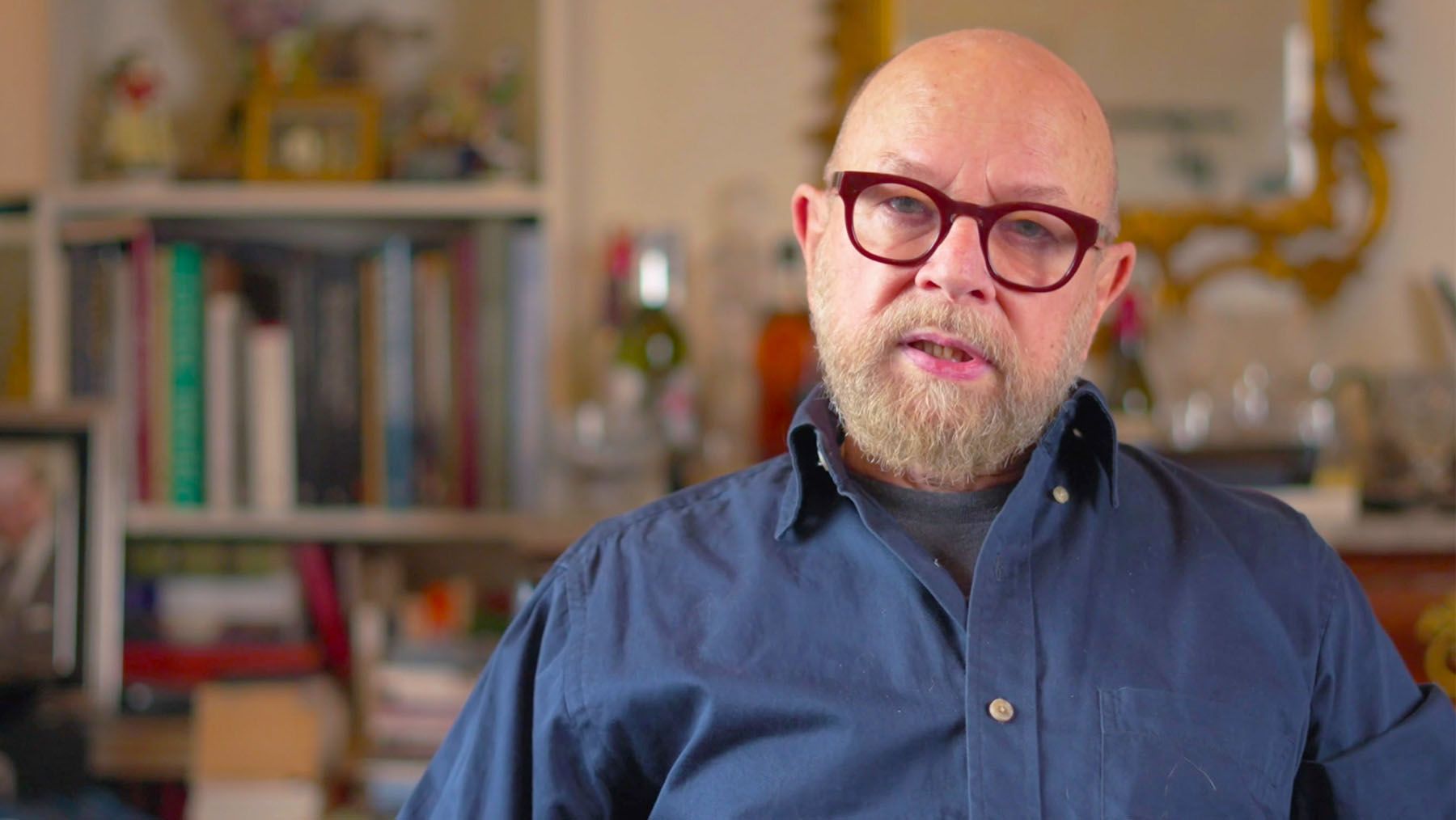Article
A Guide for Comprehensive Cancer Control Programs
Author(s):
This article outlines three areas where LGBTQ patients and their caregivers may face challenges and how the Comprehensive Cancer Control Programs (CCCP) can address these needs. Written by Dr. Amari Pearson- Fields, the former Comprehensive Cancer Program Director for Washington DC.
According to the American Cancer Society (2019), an estimated 1.7 million new cases of cancer will be diagnosed in 2019 and more than 600,000 individuals will die from the disease. As early detection has increased and cancer treatments have improved, we have seen a 27% drop in cancer deaths between 1991 and 2016 (American Cancer Society, 2019). This drop has resulted in there being more than 15 million cancer survivors in the United States (National Cancer Institute, 2018).
Unfortunately, the lack of sexual orientation and gender identity (SOGI) data collected in cancer registries makes it difficult to determine the cancer incidence, survivorship and mortality of lesbian, gay, bisexual and transgender (LGBTQ) individuals (Bowen et al., 2007). Multiple studies have shown that the LGBTQ community is at increased risk for several types of cancer due to behavioral factors (such as tobacco use, alcohol use, obesity) and delays in seeking preventive health services. For example, a meta-analysis conducted with pooled data from the California Health Interview Survey indicated that lesbian and bisexual women were 2.0 and 2.3 times more likely to have a cancer diagnosis than their heterosexual counterparts (Boehmer et al., 2011). Gay men are also at increased risk of anal, prostate cancers and cancers associated with HIV. (Rosser et al., 2016).
Enhancing Cancer Survivorship: During Treatment
Receiving a cancer diagnosis is a devastating and life-altering experience. Against the backdrop of suddenly dealing with one’s mortality, LGBTQ cancer patients also face the need to quickly understand the medical terminology they are newly exposed to, decipher and make decisions about a host of treatment options, and negotiate sexual orientation disclosure decisions with a team of health care providers. This scenario taxes the emotional resources of even the most resilient individuals. Members of the LGBTQ community, already saddled with a history of negative interactions with an often hostile and discriminatory health care system (Jabson et al., 2011), the fear associated with a cancer diagnosis is additionally complex and layered. Social support during cancer treatment can be important in mitigating this anxiety. However, coupled and married LGBTQ cancer survivors face the fear that their relationship may not be honored or recognized by their health care team, thereby marginalizing their main source of support and advocacy during cancer treatment. This is also true for LGBTQ patients whose family-of-choice is not “welcomed” or respected by the care team.
LGBTQ patients also grapple with the intersectionality of their multiple identities (sexual orientation, gender identity, race, and ethnicity) and the impact of various disparities (insurance status, poverty, literacy, etc.), along with the incorporation of a new identity as a cancer survivor. The ability to have all these identities embraced within the care environment is critical to reducing stress and facilitating healing. LGBTQ survivors must also negotiate disclosure of these identities to health care providers in ways that do not increase their vulnerability for mistreatment (Kamen et al., 2018). The inability to disclose their sexual identity to cancer care providers results in poorer health outcomes (Durso et al., 2013; Kamen et al., 2015).
The “gendering” of cancer treatment and survivorship can also be challenging to LGBTQ cancer survivors. For example, having breast cancer experience awash in pink may be off-putting for gender-variant women who do not conform to society’s concept of femininity. Also, the language associated with “waging war against cancer” may be alienating to men who have eschewed these battle concepts of masculinity. Therefore, the additional step of having to adopt a specific gendered representation in order to fit in within a clinical environment (i.e., women’s cancer center) places an undue burden on many gender non- conforming cancer survivors that compounds the stress and anxiety they already face (Taylor et al., 2016).
Post Treatment Survivorship: Survivorship Care Plan
Many survivors who have completed treatment indicate feeling adrift without the tools or support necessary to navigate their new post-treatment reality. For example, questions about how to discuss their survivorship status with friends, family and potential partners may be particularly salient to members of the LGBTQ community who already face stigma and isolation. Additionally, survivors often have questions about future primary care needs, late effects of cancer treatment, and profound fears related to disease recurrence. Survivorship care planning can help patients transition to this new period of survivorship. Unfortunately, most cancer survivorship care plans do not adequately address the needs of LGBTQ patients.
Survivorship care plans are prepared by the principal provider responsible for the coordination of oncology treatment and delivered by a member of the clinical team for individuals who have completed active therapy. In addition to providing a treatment summary and guidance on medical follow-up, care plans also offer an opportunity to assess and address the psychosocial needs of the cancer patient. Unfortunately, since most clinicians do not receive sufficient LGBTQ education, they may lack an understanding of the needs of their LGBTQ patients or may not believe differences in experience exist, and therefore appropriate resources and referrals may not be present in care plans. Additionally, few resources are available to support LGBTQ cancer patients. Therefore, additional work may be necessary to acquire relevant LGBTQ specific resources and training for health care providers to properly assess patient needs. Providers must also be able to comfortably engage in conversations that address the whole person, including sex and sensuality. Additionally, providing referrals to appropriate post-treatment supportive services such as LGBTQ cancer survivorship groups, where they exist, are critically important.
LGBTQ Cancer Caregivers
The stress associated with serving as a caregiver is often overlooked in cancer survivorship care models. However, caregivers can be emotionally and psychologically affected by the cancer diagnosis and treatment in unanticipated ways. For example, utilizing paid family leave to care for a same-sex partner or spouse may require coming out within an unsupportive work environment. Advocating for a same-sex partner or spouse in health care settings may also require having to repeatedly come out to hospital staff. Speaking from personal experience, having to explain my relationship to the patient over and over again, for even well-meaning hospital staff, including medical assistants, technicians, nurses, and food service staff, can be exhausting. Sometimes it’s easier to just accept the designation as a sister, friend, even daughter rather than reveal an identity that might impact the patient’s care, particularly when the patient is vulnerable. Safe spaces to openly discuss these issues, such as LGBTQ welcoming caregiver support groups are few and far between, often leaving the caregiver isolated and unsupported.
The Role for Comprehensive Cancer Control Programs
Comprehensive Cancer Control Programs (CCCP) can work toward improving LGBTQ survivorship in multiple ways including 1) adapting and/or incorporating a set of LGBTQ survivorship goals and objectives as part of the state cancer control plan; 2) supporting policies that include LGBTQ cultural competency training for health care providers; and 3) supporting the expansion of the number of cancer support groups that address the needs of LGBTQ cancer patients and their caregivers. CCCP can also help develop and/or promote resource lists for LGBTQ cancer patients and their caregivers including relevant assessment tools that can become part of survivorship planning activities. In addition, CCCP can be instrumental in promoting respectful provider-patient communication that incorporates and honors chosen support networks as well as inquires and uses preferred pronouns and gender identifiers (Kamen et al., 2018). These activities should be accomplished in partnership with local LGBTQ health centers, local or national LGBTQ cancer organizations, and/or LGBTQ leaders and community advocates.
Below is the list of survivorship related recommendations that might be useful in thinking about how best to incorporate LGBTQ survivorship in comprehensive cancer control activities.
Recommendations:
The recent National LGBT Cancer Action Plan: A White Paper of the 2014 National Summit on Cancer in the LGBT Community, outlines six survivorship related recommendations for improving cancer care for the LGBTQ community
National LGBT Cancer Network Enhancing Cancer Survivorship among LGBTQ Individuals Increase research to document elevated cancer risks and cancer screening disparities in LGBT communities.
Develop psychosocial and educational support groups specifically for LGBT survivors and caregivers, and when this is not feasible, assure the cultural competence of professional support service providers to better meet the needs of LGBT communities.
Improve care coordination for LGBT patients, survivors, and caregivers through the integration of LGBT community resources. These resources include culturally competent oncologists, primary care and specialty physicians, mental health providers, and other professional providers.
Educate healthcare providers about the unique co-occurring conditions that LGBT cancer patients may present in their care settings.
Ensure that palliative and end-of-life care addresses the specific legal and psychosocial needs of LGBT communities.
Support efforts to increase insurance coverage for LGBT communities, with a focus on the transition and cancer care needs of transgender communities.
References:
American Cancer Society. (2019). Cancer Facts & Figures 2019. Atlanta: American Cancer Society.
Boehmer, U., Miao, X., & Ozonof, A. (2011). Cancer Survivorship and Sexual Orientation. Cancer, 3796-3804.
Bowen, D. J., Boehmer, U. (2007). The lack of cancer surveillance data on sexual minorities and strategies for change. Cancer Causes Control, 18, 343-349.
Rosser, B. R. S., Merengwa, E., Capistrant, B. D. Iantaf, A., Kilian, G., Kohli, N., Konety, B., Mitteldorf, D., West, W. (2016). Prostate cancer in gay, bisexual, and men who have sex with men: A review. LGBT Health, 2(1), 32-41.
Burkhalter, J. E., Margolies, L., Sigurdsson, H. O., Walland, J., Radix, A., Rice, D., et al. (2016, January 27). The National LGBT Cancer Action Plan: A White Paper of the 2014 National Summit on Cancer in the LGBT Communities. https://doi.org/10.1089/ lgbt.2015.0118.
Jabson, J. M., Donatelle, R. J., Bowen, D. B. (2011). Breast cancer survivorship: the role of perceived discrimination and sexual orientation. Journal of Cancer Survivorship, 5(1), 92-101.
Kamen, C. S., Alpert, A., Margolies, L., Griggs, J. J., Darbes, L., Smith-Stoner, M. S., Lytle, M., Poteat, T., Scout, Norton, S. A.
(2018). “Treat us with dignity”: A qualitative study of the experiences and recommendations of lesbian, gay, bisexual, transgender, and queer (LGBTQ) patients with cancer. Support Care Cancer, 1-8.
Durso, L. E., Myer, I. H. (2013). Patterns and predictors of disclosure of sexual orientation to healthcare providers among lesbians, gay men, and bisexuals). Sexuality Research and Social Policy, 10(1),
35-42.
Kamen, C. S., Smith-Stoner, M., Heckler, C. E., Flannery, M., Margolies, L. (2015). Social support, self-rated health, and lesbian, gay, bisexual, and transgender identity disclosure to cancer care providers. Oncology Nursing Forum, 42(1), 44-51.
Taylor, E. T., & Bryson, M. K. (2016). Cancer’s margins: Trans and gender nonconforming people’s access to knowledge, experiences of cancer health, and decision-making. LGBT Health, 3(1), 79-89.
National Cancer Institute. (2018, April, 27). Cancer Statistics. Understanding Cancer. Bethesda, MD, USA.
Seave, J., Mitteldorf, D., Yankie, A., Pirl, W. F., Kobetz, E., & Schulmbrecht, M. (2018). Survivorship care needs among LGBT cancer survivors. Journal of Psychosocial Oncology, 36(4), 393-405.



